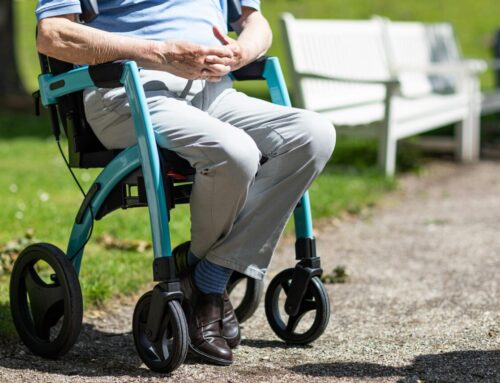What is hospice care?
Hospice care is end of life care that focuses on the home health and comfort of the patient in their last few months of life. In order to qualify for hospice care a doctor has to certify that if the illness or condition runs its course, you will have 6 months or less to live. There is no age requirement, as people of all ages can be diagnosed with a terminal illness.
The idea of hospice care is to allow the patient to live pain-free for the rest of their life. Under hospice care, all attempts to treat or cure the underlying disease will stop and any medical attention will be to deal with potentially painful symptoms. Hospice care is typically offered after attempts to treat the illness or condition have been made and were unsuccessful. Rather than subjecting the patient to more painful and time consuming treatments that are useless, they can start a hospice plan.
A team of doctors, nurses, emotional counselors, spiritual advisors, social workers, and other volunteers will work towards making the patient feel safe and comfortable as they reach the end of their life. In an outpatient setting, this team will visit the patient, at least one member of the team will come each day to the patient’s home to check in. one member of the hospice team will always be available by phone in case of emergency. The hospice team is there to ensure the patient’s physical comfort, work towards emotional stability, provide spiritual reassurance, and help them deal with the logistics.
On top of helping the patient, the hospice team also provides help to the family members as well. They help the family work through the stress of being the primary caretaker of their sick loved one. They help them throuhgh emotional counseling, spiritual guidance, and, in the event of the death of their loved one, grief counseling. They also provide respite care, where they take on the responsibility of caring for the patient to give the family a break. Respite care can last between a few hours to days at a time.
Can hospice care be done at home?
Outpatient hospice or palliative care is done in the home of either the patient themselves or the home of a family member. Hospice care at home is usually the best for the patient. The whole point to hospice care is to allow the patient to live out the rest of their life as comfortable as possible, alleviating as much physical and emotional pain as possible. Staying in a home that is familiar and comfortable to them, and being taken care of by their family and loved ones rather than relative strangers will make hospice so much easier for them to handle. A terminally ill patient has a stressful enough situation to deal with, and being with family can help them feel more safe and comfortable.
While the family is the primary caregiver in an outpatient setup, they are not alone in taking care of their sick loved one. Anyone in hospice care will be provided with a hospice care team. This team is made up of their doctors, nurses, an emotional counselor, a social worker, a spiritual advisor, and anyone else volunteering time to help the sick person. Home visits will be made at least once a day by one or more members of the hospice care team. The other members will visit periodically, and any other time their services are needed.
The doctors and nurses are the ones providing medical equipment and prescription medications for pain relief and treating the symptoms of their illness or condition. The nurses are likely to be the ones visiting the most often to ensure that the patient is phsyically comfortable and not in any pain. They will help the family understand how to take care of their loved one’s medical needs and day to day care.
The emotional counselors and spiritual advisors will help the patient deal with coming to terms with their death and with any questions or concerns, emotional and spiritual, that may come up. These counselors will also be working with the family to provide them with guidance through what is a difficult time for them as well. Taking care of a sick family member full time can be very stressful and put a strain on relationships. Preparing to lose someone close to you is also a difficult thing to do, emotionally and spiritually. Once their loved one has passed on, the counselor and spiritual leader will continue to work with the family to provide grief counseling.
The social worker will help handle the logistics of being sick and dying, so that the patient and the family can focus on spending time together.
The hospice team will also provide respite care when needed. Should the family be unable to take care of the patient for a short period of time, or just need a break from the stress of caregiving, the hospice care team will step in and take responsibility for the patient for a few hours up to a few days to give the family a break.
Inpatient versus outpatient hospice care
There are 2 main concerns to address in considering inpatient versus outpatient hospice care or palliative care. The first is how well the family can support a terminally ill family member. If the family is not in a financial or emotional state to be able to take care of the patient full time, the patient may have to be moved to a long-term inpatient facility. The second is the level of care the patient requires. While some terminally ill patients only require some pain medications that can easily be administered at home, some patients require expensive equipment or procedures. Some simply need to be monitored by medical professionals. Those patients with a higher level of care required will need to be in a hospice care program of a hospital, or a skilled nursing facility or other assisted living facility so they can have better access to hospital services and hospice benefits.
Some of the benefits of inpatient hospice care is that the patient has much better access to medical attention and hospital services, which is a huge deal for those who have more serious or painful symptoms to deal with. An inpatient facilty can cut down on travel time, both for the patient and the hospice team. For a terminally ill patient, travelling back and forth from home to hospitals to other facilities to handle symptoms, it cna be very stressful and tiring. Staying in a hospice program of a hospital or a nursing facility will allow the patient to be closer to their doctors and treatment facilities. The hospice team will also be much closer, and so can provide help much faster. In the event of an emergency, the team won’t have to travel all the way to the patient’s home, which may be far, but will most likely be in the same building already.
Sometimes the family is not in a position to give end of life care to their loved one. Or the patient does not have many family members who can take care of them. In this case, moving to nursing homes or other hospice care facilities can also provide the patient with others that they can interact with. Living in an inpatient hospice facility provides the patient with others in a similar situation that they can interact with. Forming friendships can make the last few months much easier for a patient who cannot be with family.
Outpatient home hospice care also has several benefits. When doing home care, the patient can be surrounded by their family and can be in a place they recognize and feel safe in. Being terminally ill and preparing to die is scary, and the patient will want to be with the people they love in a place they like to be in. Since the comfort of the patient is the main goal of hospice care, home care is usually the best option for them. Their home health can be monitored by their hospice team and they will be supported by their family.
Does insurance cover home hospice care?
Medicare will cover all hospice care and palliative care expenses. Medicare part A covers all inpatient care, charges for hospital services, skilled nursing facility care charges, nursing home care charges, home health care charges, and hospice charges. Medicare part B will cover any outpatient service, including home visits from your hospice team, and any medical equipment or prescription medications you receive. Original Medicare is Medicare part A and part B so if you have the original Medicare plan, then all hospice or palliative care charges will be covered.
The one thing Medicare will not cover is the expenses of long term room and board. Short term respite care or emergency visits to the hospital are covered by the inpatient coverage, so any visits under 5 days are paid for. In an inpatient facility like a hospital or nursing home, you will be responsible for rent and for meals.
What is palliative care?
Palliative care is much like hospice care, however, curative treatment attempts do not need to stop. Palliative care does not require a 6 month life expectancy, as attempts can still be made to cure the underlying condition. Anyone with a serious, life-threatening, or chronic illness or condition can qualify for palliative care. The focus of palliative care is split between managing pain and curing the disease. Should the patient stop responding to treatment, or want to stop on their own, they cna transfer from palliative care to a hospice program so long as they will have 6 months to live once treatments stop.
When should you consider hospice care?
Hospice care is usually considered when the patient no longer responds to treatment. Once it is clear that there is nothing that can be done to cure the disease, then hopsice care is considered. Once the patient has only 6 months left to live, end of life care can help them focus on making those last months enjoyable and pain free.




